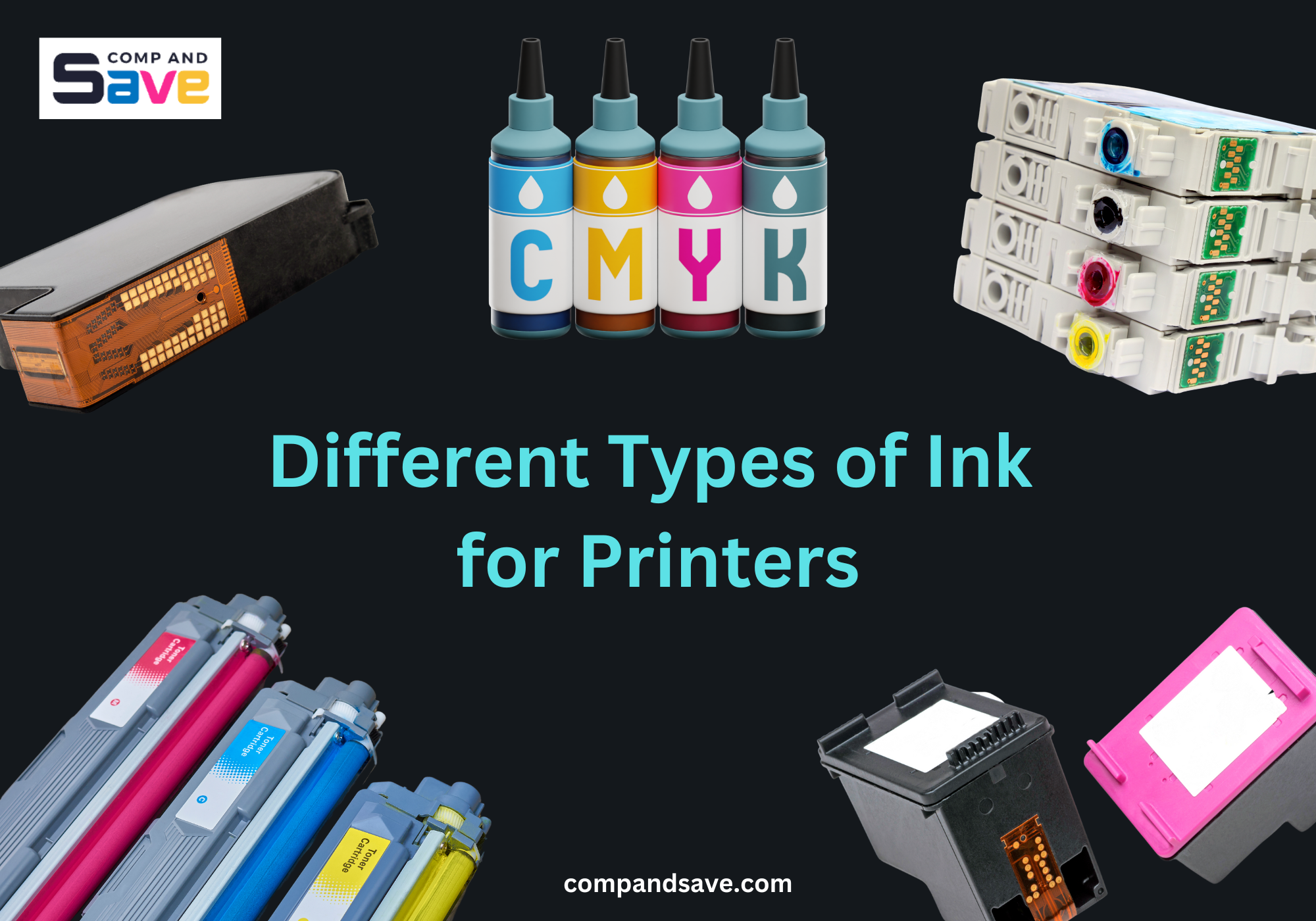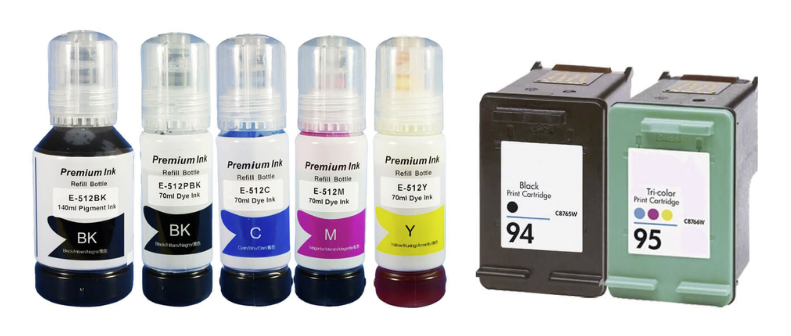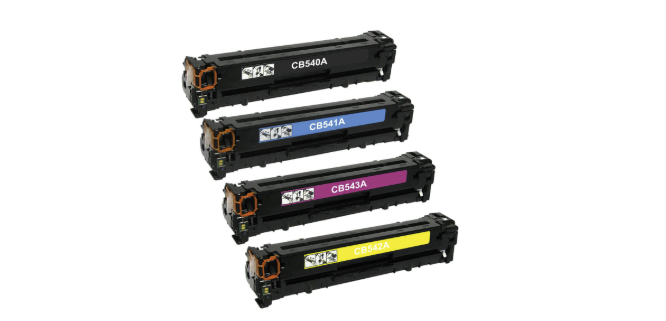Different Types of Ink for Printers: Guide for Quality Print
| Dec 31, 2024Ever been in a rush to print, only to find that your printer is low on ink or producing poor-quality prints? This frustrating situation can not only waste your time but also affect the outcome of your important work. Whether you’re printing for a business presentation or a family photo album, choosing the wrong ink can lead to costly mistakes and disappointing results.
Whether you’re deciding between Inkjet vs Laser printers, selecting the right types of printer ink is vital for ensuring your prints look great, last longer, and don’t drain your budget.
In this blog, we will explore the following:
- Understanding the role of ink in print quality and performance.
- Exploring different types of ink for printers and their uses
- How to pick the best ink based on your printer model and needs.
Understanding the Different Types of Printer Ink
Understanding different types of ink for printers is key to selecting the right ink for your needs. Inkjet, laser, and specialized inks each offer unique benefits. Knowing these differences helps you decide what ink to use for your printer to ensure optimal performance, cost-efficiency, and print quality.
1. Inkjet Printer Ink
Inkjet ink is liquid-based and comes in two primary types: dye ink and pigment ink. These inks are popular for home and office use, especially for printing photos, documents, and colored images.
Applications:
- Dye ink is one of the most common types of ink used in inkjet printers. It consists of colorants dissolved in a liquid, usually water. This composition allows the ink to flow easily and produce vibrant colors. These inks are best for photo printing and graphics due to their bright and vivid colors. However, they are not suitable for documents that need to last for a long time.
- Pigment ink is another common type used in inkjet printers, known for its longevity and water resistance. These inks consist of tiny particles of color suspended in the liquid. The particles sit on top of the paper rather than soaking in. Such inks are ideal for professional documents and archival-quality prints. They are perfect for items that must last a long time without fading or smudging.
- Sublimation ink is used to transfer images onto materials like polyester and textiles. These inks are designed to turn into gas without becoming liquid first. When heated, they bond with polyester fabric or coated items. Sublimation ink is best for printing on polyester, textiles, and items like mugs and phone cases. It’s perfect for creating personalized, high-quality products.
- Direct-to-Garment Ink (DTG) is used to print directly onto fabrics. Such inks are specifically formulated for fabric printing. They are absorbed by the material’s fibers, resulting in high-quality prints. DTG ink is ideal for fabric printing, especially for custom clothing and detailed textile designs. It provides vibrant and durable prints.
2. Laser Printer Toner
Laser printers use toner, a dry powder that is fused to the paper using heat. This method produces sharp, precise prints and is commonly used in offices for printing large volumes of text documents.
Applications:
- High-volume printing tasks such as business documents, newsletters, and invoices.
- Used in certain laser printers for printing on non-paper surfaces like fabrics and plastics.
3. Alternative Printer Inks
A. Solid ink
Solid ink is used in some color laser printers, where it is melted and then applied to the paper. These kinds of printer inks produce vibrant colors and sharp prints, making them suitable for high-quality, color-rich materials.
Applications:
- Color printing for marketing materials, brochures, and high-quality presentations.
B. UV Ink
UV ink is used in UV printers and is cured using ultraviolet light. These types of inks are ideal for printing on a variety of surfaces, including metal, plastic, glass, and wood. UV ink is commonly used in industrial and commercial printing.
Applications:
- Printing on non-porous surfaces like glass, metal, and plastic.
- Specialty items like signs, promotional materials, and product packaging.
C. 3D Printer Ink
3D printing ink, also known as filament, is used in 3D printers to create tangible objects from digital designs. The composition of this ink can vary, depending on the type of material being printed—plastics, metals, or even ceramics.
Applications:
- Material-specific inks for creating 3D objects with intricate detail.
- Offers a wide range of materials, including plastics, metals, and resins.
Choosing the Right Type of Ink for Your Needs
Selecting the right ink is crucial for quality and cost-effectiveness. Different types of printer ink serve specific needs, and choosing the right one ensures better results. Here’s how to make the best choice:
1. For Photo Printing:
Dye-based inks offer vibrant, rich colors, ideal for photos. They provide sharp details but can fade over time, so they’re better for personal photos rather than archival prints.
- Recommendation: Choose dye ink vs pigment ink for photo printing for high-quality photos.
2. For Professional Documents:
Pigment-based inks are durable, water-resistant, and fade-resistant, making them perfect for documents that need to last.
- Recommendation: Use pigment ink for long-lasting professional documents.
3. For Outdoor Signage:
Eco-solvent ink and latex inks offer durability and resistance to weathering, ideal for outdoor signs and banners.
- Recommendation: Choose eco-solvent ink or latex inks for outdoor prints.
4. For Fabric and Personalized Items:
Sublimation inks bond well with fabrics and non-porous materials, making them perfect for custom items like t-shirts or mugs.
- Recommendation: Use sublimation inks for fabric and personalized prints.
Factors to Consider When Buying Ink
Evaluate these factors to consider when buying ink such as how many types of ink are there, the required print quality, cost efficiency, and your specific printing needs. So, for your printer and projects.
- Print Quality: Choose inks based on the print quality you need. Dye inks are great for photos, while pigment inks are best for documents.
- Cost Efficiency: Pigment inks may be pricier but last longer, while dye inks are cheaper upfront but need more frequent replacement.
- Printer Compatibility: Ensure the ink is compatible with your printer model.
- Environmental Impact: Look for eco-friendly options like recycled cartridges or eco-solvent ink.
Reliable Sources for Purchasing Different Types of Ink for Printers
To buy different types of ink for printers, consider both local and online options.
Local Stores
Office supply stores like Staples and Office Depot offer various ink types, including dye ink vs pigment ink for photo printing, but prices may be higher.
Online Stores
CompAndSave.com is a top choice for affordable printer ink, including eco-solvent ink and refillable cartridges. Other reliable options are Amazon, Best Buy, and Walmart, offering a wide range of different printer ink types from top brands.
Conclusion
Choosing the right different types of ink for printers is crucial for achieving the best print quality, cost efficiency, and durability. There are various types of printer ink, including dye inks and pigment ink for photo printing, eco-solvent ink, and UV ink—each designed for specific needs, such as photo printing, professional documents, or industrial uses.
Understanding these different kinds of ink helps you select the best ink for your printer, ensuring high-quality results while managing costs. Selecting ink based on your printing requirements—whether for vibrant photos or long-lasting documents—will enhance your overall printing experience.
Frequently Asked Questions
1. Is inkjet ink always cheaper than laser toner?
Inkjet printers typically have lower initial costs but can become expensive for high-volume printing. Laser printers are more cost-effective over time due to lower cost per page and longer-lasting toner cartridges.
2. Is all printer ink the same?
No, there are different types of printer ink designed for various applications. For example, eco-solvent ink is used for outdoor signage, and sublimation ink is ideal for fabric printing due to its material bonding capabilities.
3. Can laser printers produce high-quality photos?
Laser printers can produce decent color prints, but inkjet printers generally offer superior-quality for photos. Inkjets use liquid ink that blends better, resulting in richer colors and finer details for photo printing.
4. Should I always buy original brand ink?
Not necessarily. While original ink provides guaranteed quality, third-party ink options can offer similar results at a lower cost. Always consider the compatibility and quality of the ink before deciding.
Related Articles:
Inkjet vs Laser: Difference Between Inkjet and Laser Printers Guide






